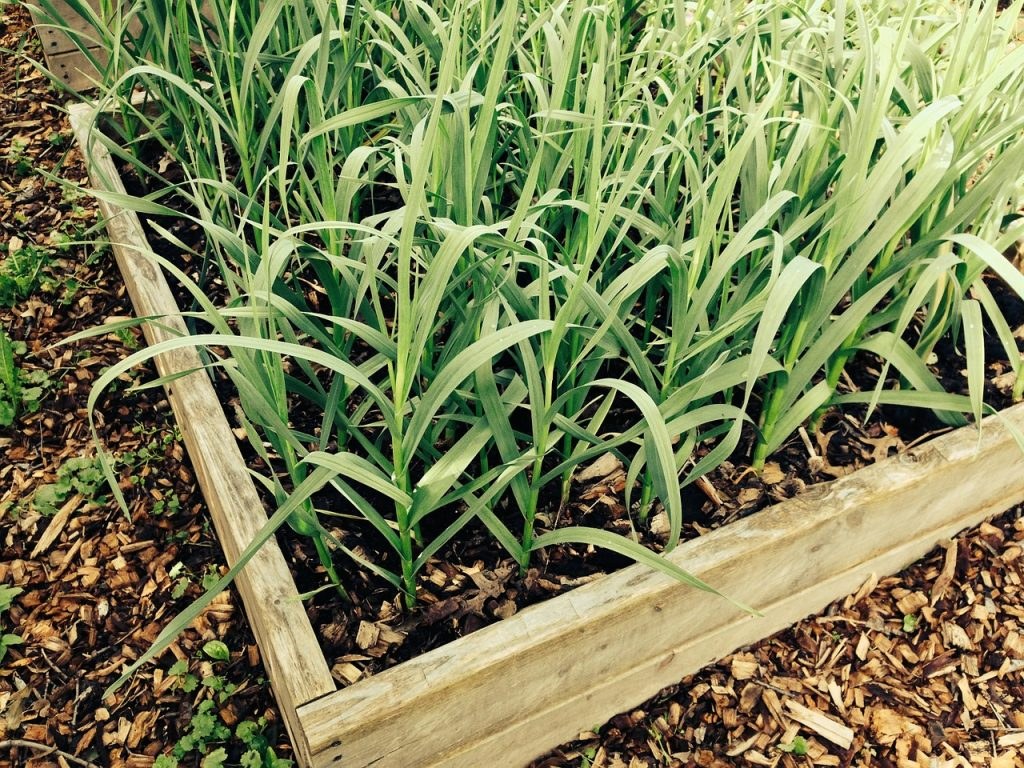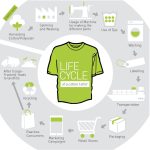Unlocking The Power Of Sustainable Living: Join The ESRC Movement Today!
Sustainable Living ESRC: Building a Better Future for All
Welcome, readers! Today, we will delve into the concept of sustainable living ESRC and explore how it can positively impact our lives and the environment. In this article, we will discuss the various aspects of sustainable living ESRC, including its definition, benefits and drawbacks, and how it can be implemented in our daily lives. So, let’s dive in and discover the path to a greener and more sustainable future!
Introduction
Sustainable living ESRC, also known as Environmentally Sustainable and Resilient Communities, is a holistic approach to living that aims to promote a harmonious coexistence between humans and the environment. It encompasses various practices, such as reducing our carbon footprint, conserving natural resources, promoting renewable energy sources, and fostering community resilience.
2 Picture Gallery: Unlocking The Power Of Sustainable Living: Join The ESRC Movement Today!


At its core, sustainable living ESRC seeks to strike a balance between meeting our present needs while preserving the planet’s resources for future generations. By adopting sustainable practices, we can create a more sustainable and resilient future for ourselves, our communities, and the planet as a whole.
Now, let’s explore the key aspects of sustainable living ESRC:
What is Sustainable Living ESRC? 🌿
Sustainable living ESRC is an approach that aims to minimize our impact on the environment by adopting practices that are ecologically responsible, socially just, and economically viable. It involves making conscious choices in our daily lives to reduce waste, conserve energy, and promote sustainable development.

Image Source: accessnetwork.uk
By embracing sustainable living ESRC, individuals and communities can contribute to mitigating climate change, protecting biodiversity, and ensuring a better quality of life for future generations. It involves a shift towards more sustainable consumption patterns, renewable energy sources, and a circular economy.
Sustainable Living ESRC and its Impact on the Environment
Sustainable living ESRC plays a crucial role in protecting and preserving the environment. By reducing our carbon footprint and promoting sustainable practices, we can mitigate climate change, conserve natural resources, and protect ecosystems from degradation.
One of the key aspects of sustainable living ESRC is reducing greenhouse gas emissions. This can be achieved by adopting energy-efficient technologies, promoting renewable energy sources, and embracing sustainable transportation options such as cycling or using public transportation.
Sustainable Living ESRC and Social Equity
Sustainable living ESRC also focuses on promoting social equity and justice. It recognizes the interconnections between social, economic, and environmental issues and aims to address them holistically.
By embracing sustainable living ESRC, communities can create inclusive environments that prioritize the well-being of all members, regardless of their socio-economic status or background. This includes providing access to affordable housing, healthcare, education, and job opportunities.
Sustainable Living ESRC and Economic Viability

Image Source: foodresearch.org.uk
Contrary to popular belief, sustainable living ESRC is not just about sacrificing economic growth. In fact, it can contribute to long-term economic viability by creating new job opportunities, promoting innovation, and fostering local entrepreneurship.
Investing in renewable energy, for example, can create a significant number of green jobs while reducing dependence on fossil fuels. Similarly, embracing sustainable agriculture practices can enhance food security, improve soil health, and support local farmers.
Who Can Benefit from Sustainable Living ESRC? 🌏
Sustainable living ESRC is beneficial for everyone, regardless of age, background, or location. Individuals, communities, businesses, and governments all have a role to play in embracing sustainable practices and building a more resilient future.
Individually, adopting sustainable habits such as reducing waste, conserving energy, and opting for eco-friendly products can lead to a more sustainable lifestyle. Communities can work together to create sustainable neighborhoods, implement renewable energy projects, and promote local initiatives that foster resilience.
Businesses can integrate sustainability into their operations by adopting eco-friendly practices, reducing waste, and implementing sustainable supply chains. Governments can support and incentivize sustainable development through policy frameworks, regulations, and financial support.
When Should We Start Embracing Sustainable Living ESRC? ⏳
The time to embrace sustainable living ESRC is now. With the increasing challenges posed by climate change, resource depletion, and environmental degradation, it is crucial that we take action to create a more sustainable future.
Waiting for the perfect moment or for others to act is not an option. Each one of us has the power to make a difference through our daily choices and actions. Whether it’s reducing our energy consumption, supporting sustainable businesses, or advocating for sustainable policies, every small step counts.
Where Can We Implement Sustainable Living ESRC? 🌍
Sustainable living ESRC can be implemented in various aspects of our lives, from our homes and workplaces to our communities and cities. Here are some areas where we can apply sustainable practices:
Sustainable Housing and Architecture
Building energy-efficient homes, incorporating renewable energy sources, and adopting sustainable building materials are ways to promote sustainable housing. Designing buildings with natural lighting, proper insulation, and efficient water management systems can also contribute to sustainable living ESRC.
Sustainable Transportation
Choosing sustainable transportation options such as walking, cycling, or using public transportation can help reduce carbon emissions and promote healthier lifestyles. Additionally, embracing electric vehicles or carpooling can contribute to a greener and more sustainable transportation system.
Sustainable Food Systems
Supporting local and organic food producers, reducing food waste, and embracing plant-based diets are all ways to promote sustainable food systems. By choosing sustainably sourced and produced food, we can reduce the environmental impact of our diets and support a more resilient food system.
Sustainable Consumption and Waste Management
Practicing mindful consumption, opting for eco-friendly products, and reducing waste can significantly contribute to sustainable living ESRC. Embracing the principles of the circular economy, such as recycling, reusing, and repurposing, can help minimize waste and conserve resources.
Sustainable Energy
Transitioning to renewable energy sources such as solar, wind, or geothermal power is crucial for sustainable living ESRC. By reducing our dependence on fossil fuels and embracing clean energy alternatives, we can mitigate climate change and promote a more sustainable future.
Why Should We Embrace Sustainable Living ESRC? ❓
There are numerous reasons why embracing sustainable living ESRC is crucial for our well-being and the well-being of the planet. Here are some key reasons:
Preserving the Environment
Sustainable living ESRC helps protect and preserve the environment by reducing our impact on natural resources, conserving energy, and mitigating climate change. It ensures that future generations can enjoy a healthy and thriving planet.
Promoting Social Equity
By embracing sustainable living ESRC, we can create more inclusive and equitable communities. It promotes access to essential services, reduces socio-economic disparities, and ensures that no one is left behind.
Building Resilient Communities
Sustainable living ESRC fosters community resilience by promoting self-sufficiency, disaster preparedness, and social cohesion. It helps communities adapt to the challenges posed by climate change and other environmental and social disruptions.
Improving Health and Well-being
Sustainable living ESRC contributes to improved health and well-being by reducing pollution, promoting active lifestyles, and providing access to clean air and water. It creates healthier living environments for individuals and communities.
Driving Economic Growth
Sustainable living ESRC can drive economic growth by creating new job opportunities, promoting innovation, and fostering local entrepreneurship. It ensures that economic development is aligned with environmental and social sustainability.
How Can We Embrace Sustainable Living ESRC? 🌱
Embracing sustainable living ESRC requires collective action and a commitment to change. Here are some steps we can take to embrace sustainable living ESRC:
Educate Ourselves and Raise Awareness
Learning about sustainable living ESRC and its benefits is the first step towards embracing it. We can educate ourselves through books, documentaries, online resources, and by attending workshops or sustainability events. We can also raise awareness in our communities and inspire others to join the movement.
Adopt Sustainable Habits in Our Daily Lives
Simple actions such as reducing energy consumption, conserving water, recycling, and supporting local businesses can make a significant impact. By adopting sustainable habits in our daily lives, we can contribute to a more sustainable future.
Support Sustainable Businesses and Initiatives
Supporting businesses that prioritize sustainability and eco-friendly practices is another way to embrace sustainable living ESRC. By choosing products and services that align with our values, we can drive demand for sustainable alternatives and encourage more businesses to adopt sustainable practices.
Advocate for Sustainable Policies
Engaging in advocacy and supporting sustainable policies at the local, national, and international levels is crucial for creating systemic change. By raising our voices and demanding sustainable policies, we can influence decision-makers and drive the transition towards a more sustainable future.
Collaborate and Engage in Community Initiatives
Joining local sustainability initiatives, participating in community gardens, or volunteering for environmental organizations are ways to engage with others and make a tangible impact. By collaborating with like-minded individuals, we can create lasting change at the community level.
Advantages and Disadvantages of Sustainable Living ESRC
Like any concept, sustainable living ESRC has its advantages and disadvantages. Let’s explore them in detail:
Advantages of Sustainable Living ESRC
1. Environmental Protection: Sustainable living ESRC helps protect the environment by conserving resources, reducing pollution, and mitigating climate change.
2. Social Equity: It promotes social equity by addressing socio-economic disparities and ensuring access to essential services for all members of society.
3. Resilient Communities: Sustainable living ESRC fosters community resilience by promoting self-sufficiency, disaster preparedness, and social cohesion.
4. Health and Well-being: It contributes to improved health and well-being by reducing pollution and providing access to clean air and water.
5. Economic Growth: Embracing sustainable living ESRC can drive economic growth by creating new job opportunities and supporting local entrepreneurship.
Disadvantages of Sustainable Living ESRC
1. Initial Costs: Implementing sustainable practices and technologies may require higher upfront costs, which can be a barrier for some individuals, businesses, or communities.
2. Behavioral Change: Embracing sustainable living ESRC often requires a change in behavior and lifestyle, which can be challenging for some individuals.
3. Limited Resources: In certain regions or communities, access to sustainable resources or technologies may be limited, hindering the adoption of sustainable living ESRC.
4. Transition Period: The transition towards sustainable living ESRC may require time and effort to implement changes and overcome resistance from existing systems and practices.
5. Lack of Awareness: Many individuals and communities may still be unaware of the importance and benefits of sustainable living ESRC, which can slow down its adoption.
Frequently Asked Questions (FAQs)
1. Is sustainable living ESRC only for environmentalists?
No, sustainable living ESRC is for everyone. It is a collective effort that requires individuals, communities, businesses, and governments to work together towards a greener and more sustainable future.
2. How can I incorporate sustainable living ESRC into my daily life?
Start by making small changes in your daily habits, such as reducing waste, conserving energy, and supporting sustainable businesses. Educate yourself about sustainable practices and inspire others to join you on this journey.
3. Can sustainable living ESRC contribute to economic development?
Yes, sustainable living ESRC can drive economic growth by creating new job opportunities, promoting innovation, and fostering local entrepreneurship. It ensures that economic development is aligned with environmental and social sustainability.
4. What role can governments play in promoting sustainable living ESRC?
Governments can play a crucial role in promoting sustainable living ESRC by implementing policies that support renewable energy, sustainable transportation, and eco-friendly practices. They can also provide financial incentives and support to individuals, businesses, and communities embracing sustainability.
5. How long will it take to see the benefits of sustainable living ESRC?
The benefits of sustainable living ESRC can be seen in both the short and long term. By adopting sustainable practices, we can immediately reduce our environmental impact and improve our well-being. However, the full impact of sustainable living ESRC on a global scale may take time and require collective action.
Conclusion: Embrace Sustainable Living ESRC for a Better Future
In conclusion, sustainable living ESRC is not just a buzzword; it is a pathway to a better future for all. By embracing sustainable practices in our daily lives, communities, and businesses, we can create a more sustainable, resilient, and equitable world.
Through environmental protection, social equity, and economic viability, sustainable living ESRC offers numerous benefits. From preserving the environment and improving health to driving economic growth and building resilient communities, the advantages of sustainable living ESRC are far-reaching.
While there may be challenges and drawbacks along the way, the urgency and importance of embracing sustainable living ESRC cannot be overstated. The time to act is now, and each one of us has a
This post topic: Idensr Lifestyles



